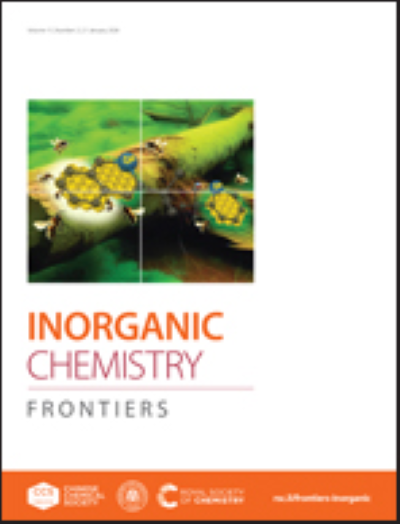Dual-Band White Light Emission and Temperature-Dependent Luminescence of Sn2+ in the Metastable Structure of Cs2CaCl4(H2O)2
IF 6.1
1区 化学
Q1 CHEMISTRY, INORGANIC & NUCLEAR
引用次数: 0
Abstract
The quest for novel luminescent materials with tunable color emission and temperature-sensing capabilities remains a vibrant field of research, particularly for applications in solid-state lighting and security features. In this study, the as-synthesized a rod-like crystal Cs2CaCl4(H2O)2:Sn2+ (R-CCCH:Sn2+) exhibits dual- band white light emission characterized at 415 nm and 540 nm, which are correspond to the singlet state and triplet state transitions of Sn2+, respectively. Upon heating from 298 to 428 K, an anomalous enhancement in the intensity of the 415 nm emission in R-CCCH:Sn2+ was observed while its 540 nm emission underwent significant thermal quenching. The observation of the temperature-dependent photoluminescence (PL) indicates that R-CCCH:Sn2+ exists in a metastable state. Upon calcinating at 428 K for 20 min, the R-CCCH:Sn2+ changed to the stable state P-CCCH:Sn2+, exhibiting the STEs of CCCH matrix and the 3P1→1S0 transition of Sn2+. The significance of this work lies in the discovery of the metastable state in CCCH and the manipulation of Sn2+ to emit both singlet and triplet transitions, leading to white light emission.Cs2CaCl4(H2O)2亚稳结构中Sn2+的双波段白光发射和温度依赖发光
寻找具有可调色发射和温度传感能力的新型发光材料仍然是一个充满活力的研究领域,特别是在固态照明和安全功能方面的应用。本研究合成的棒状晶体Cs2CaCl4(H2O)2:Sn2+ (R-CCCH:Sn2+)表现出415 nm和540 nm的双波段白光发射,分别对应Sn2+的单重态和三重态跃迁。从298 K加热到428 K, R-CCCH:Sn2+的415 nm发射强度出现了异常增强,而其540 nm发射强度发生了明显的热猝灭。对温度依赖性光致发光(PL)的观察表明,R-CCCH:Sn2+以亚稳态存在。在428 K下煅烧20 min后,R-CCCH:Sn2+转变为稳定态P-CCCH:Sn2+,表现出CCCH基体的STEs和Sn2+的3P1→1so0跃迁。这项工作的意义在于发现了CCCH的亚稳态,并操纵Sn2+发出单线态和三重态跃迁,从而发出白光。
本文章由计算机程序翻译,如有差异,请以英文原文为准。
求助全文
约1分钟内获得全文
求助全文
来源期刊

Inorganic Chemistry Frontiers
CHEMISTRY, INORGANIC & NUCLEAR-
CiteScore
10.40
自引率
7.10%
发文量
587
审稿时长
1.2 months
期刊介绍:
The international, high quality journal for interdisciplinary research between inorganic chemistry and related subjects
 求助内容:
求助内容: 应助结果提醒方式:
应助结果提醒方式:


